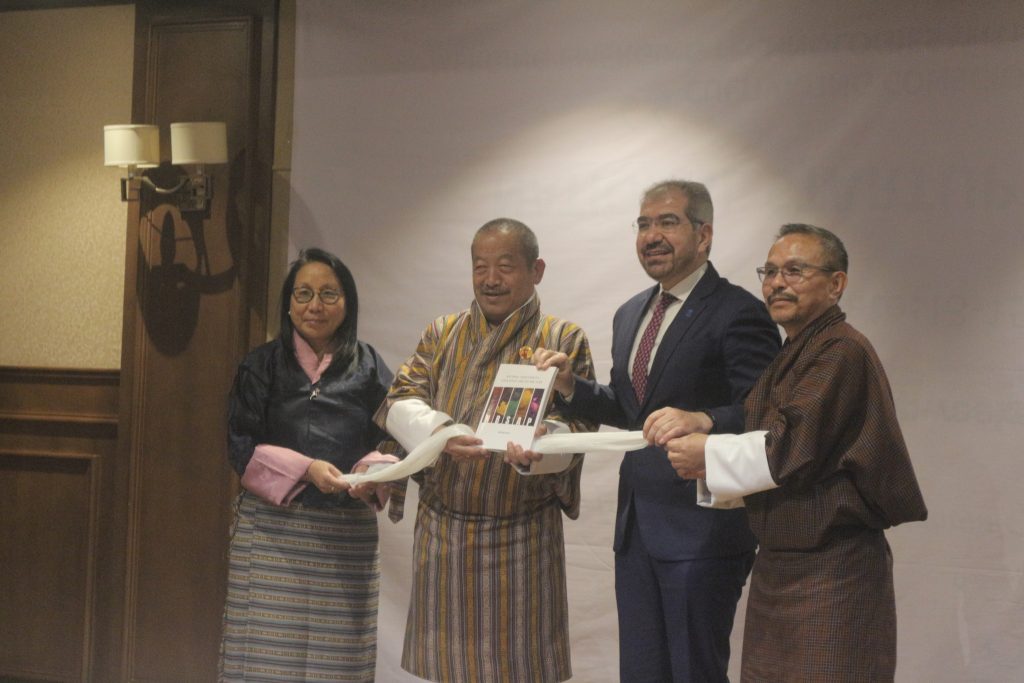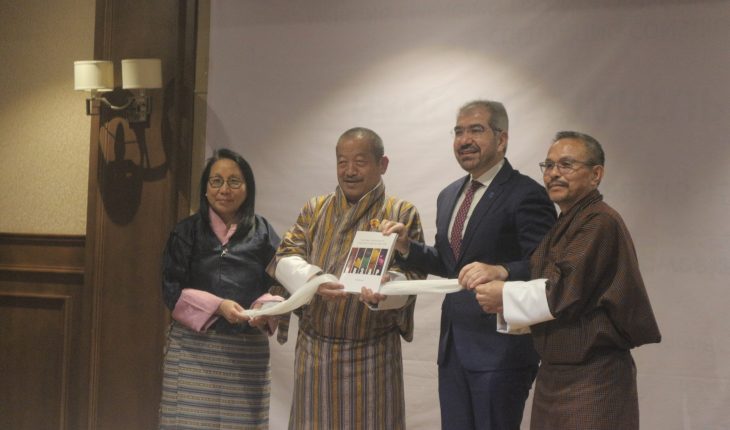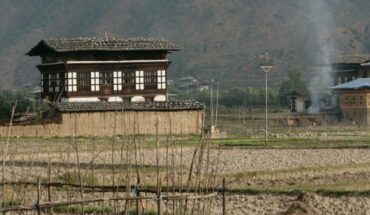
The 5th National Biodiversity Strategy and Action Plan reaffirm Bhutan’s global leadership in environmental stewardship
NGAWANG JAMPHEL| Thimphu
On 15 September, coinciding with World Ozone Day, Bhutan launched its 5th National Biodiversity Strategy and Action Plan (NBSAP), a landmark policy document that lays out 20 ambitious national targets to safeguard the country’s biodiversity, strengthen ecosystems, and link conservation efforts with livelihoods, cultural heritage, and economic resilience.
The updated strategy reaffirms Bhutan’s global leadership in environmental stewardship and renews its commitment to the Convention on Biological Diversity.
Building on the achievements of the 4th NBSAP, the new plan provides a roadmap up to 2030, placing harmony between people and nature at the heart of Bhutan’s development agenda.
Unlike its predecessors, the 5th NBSAP adopts an integrated, end-to-end approach to biodiversity management—covering ecosystem restoration, species and genetic diversity conservation, sustainable use of resources, pollution reduction, climate adaptation, and institutional strengthening.
The 5th NBSAP is distinguished by its bold alignment with both national and global priorities. For the first time, the strategy is being linked with Bhutan’s Nationally Determined Contributions (NDC 3.0) under development, creating a coherent national pathway for biodiversity and climate action.
It also places ecosystem integrity at the core of long-term economic wellbeing, fully in line with Bhutan’s development philosophy of Gross National Happiness. The plan is built on three equal pillars—science, traditional knowledge, and community participation—while its 20 targets are aligned with the Kunming–Montreal Global Biodiversity Framework and the Sustainable Development Goals (SDGs).
In addition, the NBSAP is closely aligned with the 13th Five-Year Plan to ensure coordinated implementation, effective resource utilisation, and systematic monitoring and evaluation.
Officials stressed that the NBSAP is not just a government blueprint but a national framework for collective action.
Its success, they said, will depend on coordinated efforts from government agencies, local governments, communities, civil society organisations, the private sector, academia, and development partners.
Implementation will focus on mainstreaming biodiversity across key sectors such as agriculture, tourism, energy, finance, and urban development, ensuring strong linkages with Bhutan’s economic transformation roadmap.
It will also highlight Bhutan’s biodiversity–climate nexus, where conserving nature directly contributes to climate resilience, green jobs, and sustainable growth.
The strategy was prepared jointly by the National Biodiversity Centre under the Ministry of Agriculture and Livestock and the Department of Environment and Climate Change under the Ministry of Energy and Natural Resources, with support from the United Nations Development Programme (UNDP) and the Global Environment Facility (GEF).
The process was shaped through wide consultations with stakeholders across all levels.
Launching the strategy, Lyonpo Younten Phuntsho, Minister for Agriculture and Livestock, said the NBSAP provides a clear framework to pursue economic prosperity without compromising Bhutan’s biodiversity and ecosystem health.
“I urge all stakeholders—government agencies, local governments, communities, civil society organisations, the private sector, academia, and development partners—to embrace this document as a national guiding framework for biodiversity stewardship,” he said.
Mohammad Younus, Resident Representative of UNDP, described the NBSAP as both a reflection of Bhutan’s past achievements and a forward-looking strategy to safeguard nature while enabling prosperity.
“Let us treat it as a living strategy—adaptive, inclusive, and focused on measurable results. Together, we can ensure Bhutan’s ecological wealth continues to underpin economic prosperity and that living in harmony with nature remains the guiding principle of Bhutan’s development agenda,” he said.
Lyonpo Gem Tshering, Minister for Energy and Natural Resources, highlighted that the NBSAP recognises the interconnected nature of the triple planetary crises—climate change, biodiversity loss, and pollution.
“This document seeks to address these critical issues in an integrated manner, rather than treating them separately,” he said.
The launch of the 5th NBSAP comes just two months before the 30th Conference of the Parties (COP30) to the United Nations Framework Convention on Climate Change, scheduled from 10–21 November in Belém, Brazil, in the heart of the Amazon forest.
COP30 is expected to place strong emphasis on nature-based solutions and indigenous leadership in conservation—areas where Bhutan is uniquely positioned to demonstrate global leadership.
Officials and partners expressed confidence that the new strategy, if effectively implemented, will not only preserve Bhutan’s globally acclaimed biodiversity but also support its economic transformation agenda.
By integrating conservation with development priorities, Bhutan hopes to present itself at COP30 as a model nation where environmental protection and economic prosperity go hand in hand.





